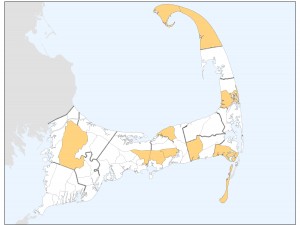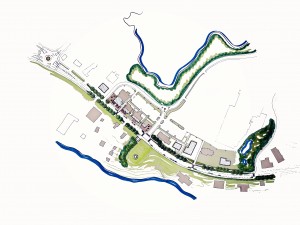What is the CEDS?
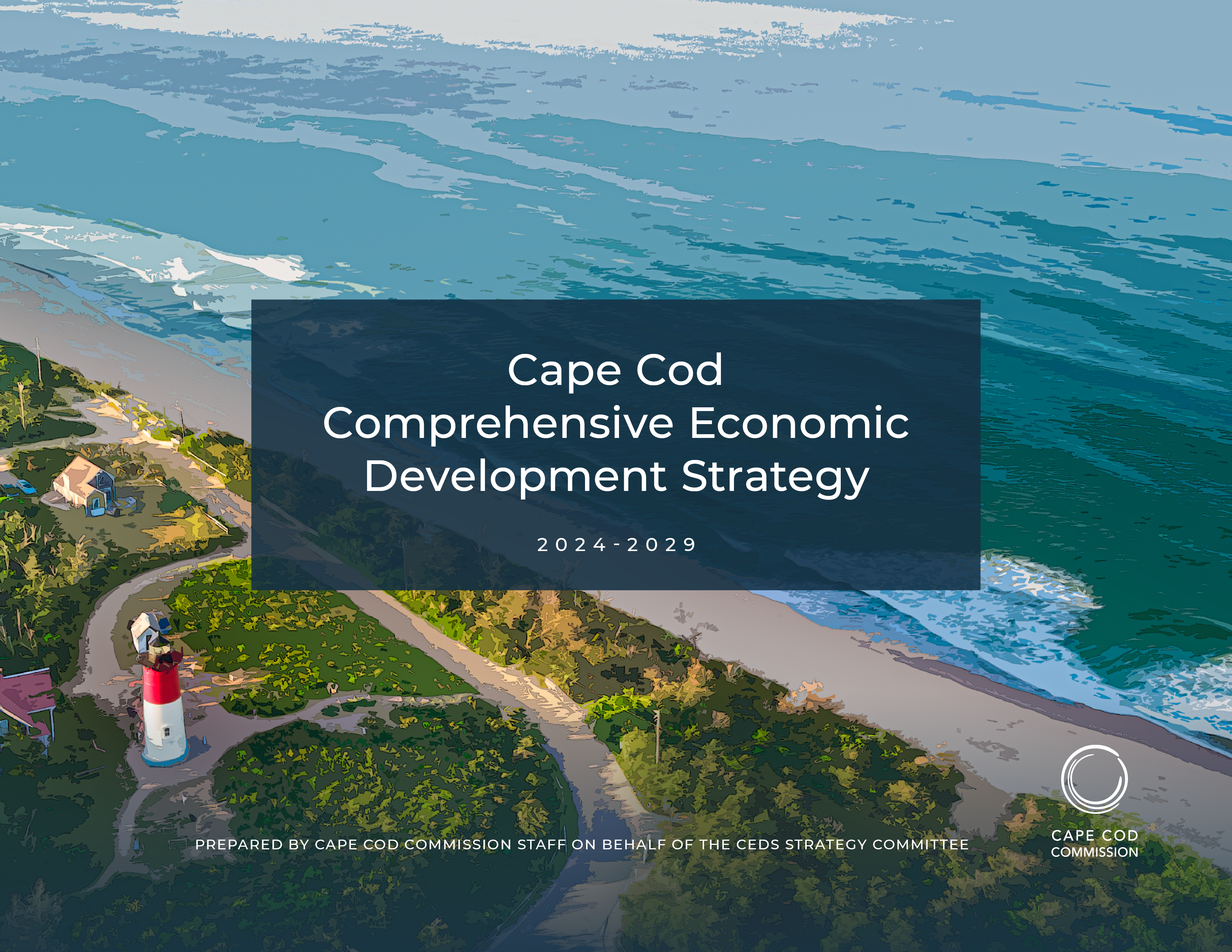 The Comprehensive Economic Development Strategy (CEDS) is a tactical economic development plan consistent with the growth policy and goals of the Regional Policy Plan, which provides a vision of the future and a framework for collaborative action. The document includes a comprehensive summary of the region's economy, including identifying regional strengths and challenges, as well as opportunities; ten key actions for advancing the vision and goals; and a framework for evaluating progress on plan implementation.
The Comprehensive Economic Development Strategy (CEDS) is a tactical economic development plan consistent with the growth policy and goals of the Regional Policy Plan, which provides a vision of the future and a framework for collaborative action. The document includes a comprehensive summary of the region's economy, including identifying regional strengths and challenges, as well as opportunities; ten key actions for advancing the vision and goals; and a framework for evaluating progress on plan implementation.
An approved CEDS is necessary for the Cape to retain its designation as an Economic Development District and be eligible for US Economic Development Administration (EDA) funding to build infrastructure, support planning and technical assistance, and establish revolving loan funds. The CEDS framework also allows economic development stakeholders to better leverage limited regional capacity and attract outside resources to build a resilient economy.
The 2024 Cape Cod CEDS was approved by the Barnstable Economic Development Council June 12, 2024 and the Cape Cod Commission June 13, 2024 and has been submitted to the US Economic Development Administration for review.
Vision and Goals
The economic vision for the region was developed through an iterative process based on input from the BCEDC and numerous
stakeholders engaged throughout the planning process.
A strong and vibrant Cape Cod
A region that supports a resilient, inclusive, and diverse year-round community with access to housing options, high quality business, education, and employment opportunities, and thriving natural resources, building upon the historic and unique characteristics that have drawn people to the region for centuries.
To support this vision, the CEDS contains six goals in the issue areas of housing attainability, community, infrastructure, natural resources, workforce development, and economic diversity and resiliency. The goals are grouped into three categories – people, places, and economy – though many relate to and support one another.
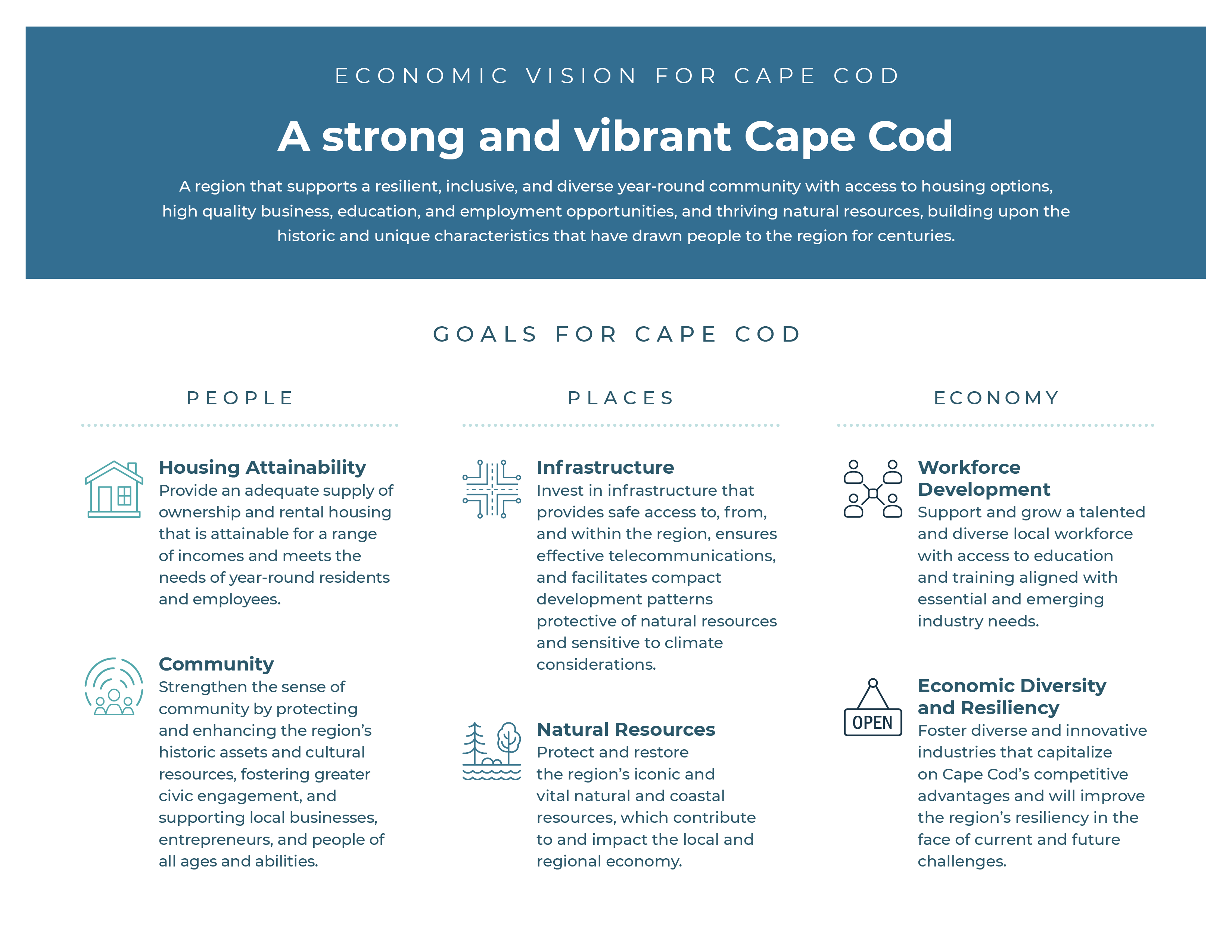
Key Actions
Throughout the CEDS planning and development process, key actions surfaced to advance the region’s economic vision over the next five years and beyond. Many of the actions advance not one but multiple goals. This list is not meant to be an exhaustive list of all actions that can be taken to advance the vision and goals of the CEDS but rather to provide a targeted list of key strategic and impactful actions to prioritize. Similarly, the lead actors identified are not a comprehensive list of all of the entities that would need to be engaged to advance an action, but rather those key actors that will lead implementation efforts.
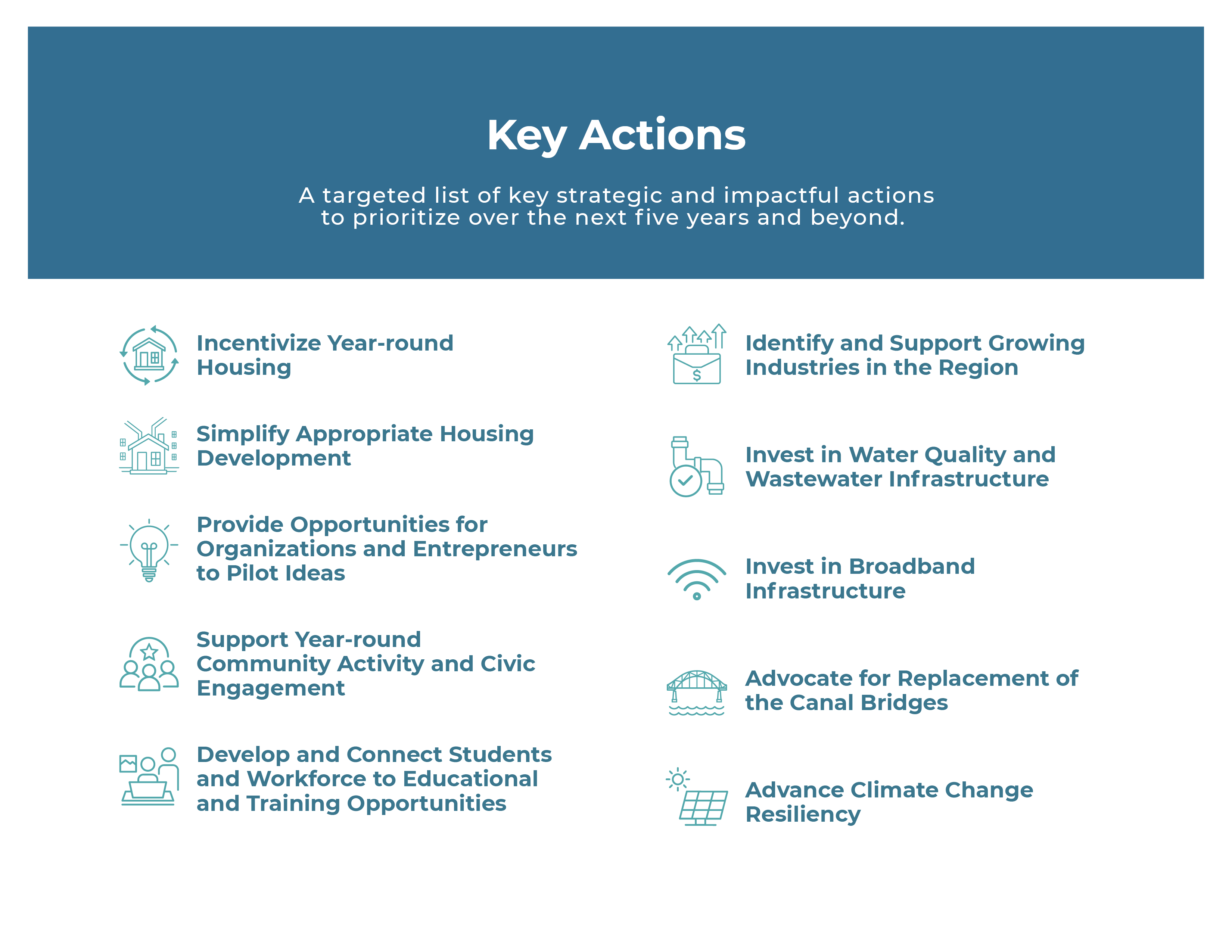
Planning Process
 The 2024 Cape Cod CEDS was developed with regular input and guidance from the Barnstable County Economic Development Council (BCEDC) (the CEDS strategy committee), and input from dozens of stakeholders with a wide range of expertise and experience. Nearly 100 people attended the 2024 Cape Cod Economic Summit on March 5, 2024 at the Cape Cod Museum of Art. The summit was a pivotal stakeholder engagement opportunity for the 2024 CEDS with presenters from across the Commonwealth and country and with breakout groups for attendees to provide feedback on the draft vision and goals and discuss priority actions to advance the goals over the next five years.
The 2024 Cape Cod CEDS was developed with regular input and guidance from the Barnstable County Economic Development Council (BCEDC) (the CEDS strategy committee), and input from dozens of stakeholders with a wide range of expertise and experience. Nearly 100 people attended the 2024 Cape Cod Economic Summit on March 5, 2024 at the Cape Cod Museum of Art. The summit was a pivotal stakeholder engagement opportunity for the 2024 CEDS with presenters from across the Commonwealth and country and with breakout groups for attendees to provide feedback on the draft vision and goals and discuss priority actions to advance the goals over the next five years.
Based on the input from summit attendees, ten key actions were identified and refined through a series of five focus groups on the topics of workforce development and economic resiliency, housing, climate change and water quality, and telecommunications and transportation and a group of municipal staff and leaders, as well as input from the BCEDC. A draft CEDS was completed in May 2024 and released for a 21-day public comment period; Commission staff refined the document based on comments received. The final CEDS was presented to the BCEDC on June 12, 2024 who approved it and forwarded it to the Cape Cod Commission for their approval. The Cape Cod Commission met June 13, 2024 and voted to approve the 2024 CEDS and submit it to EDA.
Measuring Progress
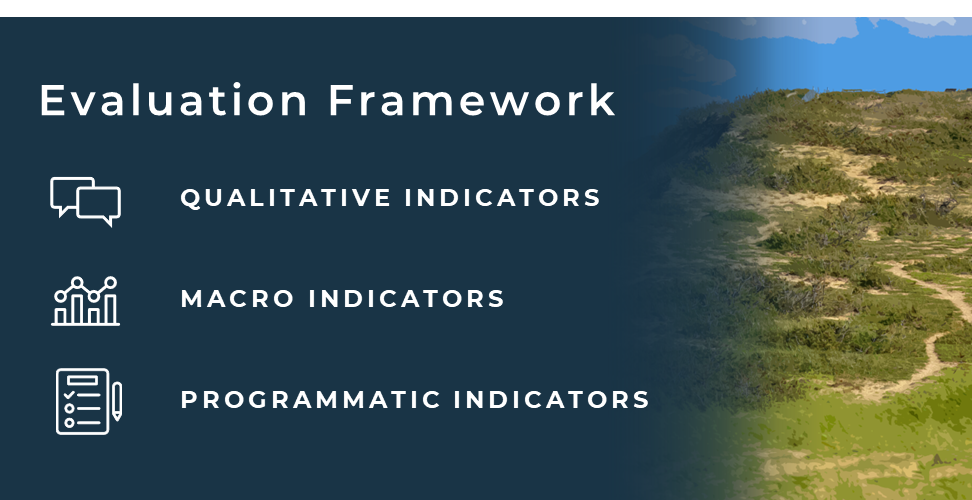 Evaluation of progress on the CEDS will involve three types of metrics or indicators: macro level, programmatic, and qualitative. Macro level indicators are high-level data that are collected regularly. Programmatic indicators are related directly to the implementation and administration of efforts and initiatives that are important to the CEDS (e.g., completing an analysis or convening stakeholders). Qualitative indicators include contextual information about progress on key initiatives of the CEDS and will arise naturally from the work done to advance the CEDS. Many of the evaluation indicators are available on Data Cape Cod and will also be tracked in the CEDS Annual Reports, completed each year in June.
Evaluation of progress on the CEDS will involve three types of metrics or indicators: macro level, programmatic, and qualitative. Macro level indicators are high-level data that are collected regularly. Programmatic indicators are related directly to the implementation and administration of efforts and initiatives that are important to the CEDS (e.g., completing an analysis or convening stakeholders). Qualitative indicators include contextual information about progress on key initiatives of the CEDS and will arise naturally from the work done to advance the CEDS. Many of the evaluation indicators are available on Data Cape Cod and will also be tracked in the CEDS Annual Reports, completed each year in June.
2025 Cape Cod CEDS Annual Report
Previous CEDS
The 2024 Cape Cod CEDS is the fourth CEDS for the region. The region must develop a new CEDS every five years to maintain its Economic District Designation. The 2019 CEDS and related annual reports are available below.
2019 CEDS
- CEDS 2019 Report and Executive Summary
- CEDS 2019 Report, Executive Summary, and Appendices
- CEDS 2019 Action Plan (Appendix IV)
2019 CEDS Annual Reports
- 2020 Cape Cod CEDS Annual Report
- 2021 Cape Cod CEDS Annual Report
- 2022 Cape Cod CEDS Annual Report
- 2023 Cape Cod CEDS Annual Report
- 2024 Cape Cod CEDS Annual Report
A text version of the 2024 CEDS (with minimal graphics) is available here.
Contact
-
Erin Perryeperry@capecodcommission.org
-
Chloe Schaeferchloe.schaefer@capecodcommission.org


